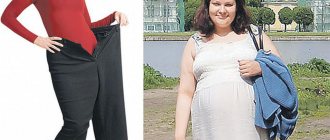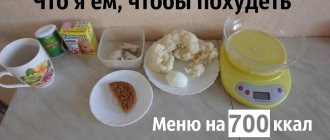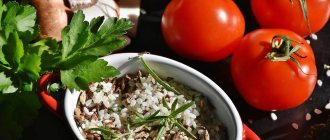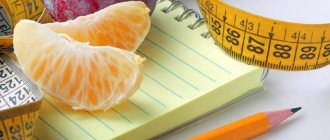People drew beautiful tables with pictures and argued with conviction that “the most alkalizing food is the most sour lemons.” The signs turned out differently for everyone, but these contradictions did not frighten anyone. In addition to readers intimidated by blood acidification, who were confused whether, for example, nuts and potatoes are acidifying or alkalizing foods.
Attempts to link the acidity of the blood to the acidity of the urine, alas, also did not lead to success. People furiously urinated on special indicator papers and just as fervently prayed for foods that made the urine alkaline. Many people drank soda - it also alkalizes the urine. Scientists, however, have bitterly learned that the pH of urine and the ability of foods to shift the pH of the blood to the alkaline or acidic side have little connection. And long-term drinking of soda generally has a negative effect on health [1].
The fact is that all these popular theories about “acidification” are very lacking in scientificity... scientificity. That is, precise mathematical calculations and chemical and biological justifications of how which products affect the acidity of the internal environment of the body. Although scrupulous German scientists back in 1993 calculated and substantiated how various products change blood pH [2].
In this article, I will also draw on more recent research by Gerry K. Schwalfenberg from the Canadian University of Alberta [3], done in 2012. He clarified the formula and methodology for calculating the effect of foods on pH, and also summarized the effect of acidifying and alkalizing diets on some important health factors.
What is this “acidification-alkalinization”?
The most popular popular idea that consumption of certain foods “acidifies” the blood is, in principle, not true. That is, the blood pH may, in certain cases, briefly shift to the acidic or alkaline side. But if the pH deviates from the optimal pH for a long time, then this indicates very deep health problems.
Millions of chemical reactions take place in the body every second, and each of them requires a very specific temperature and acidity of the environment, a certain concentration of some substances and the presence of other substances. Any violation of this causes the internal chemistry of the body to become upset. If these disturbances last long enough, we begin to get sick.
Changing such an important factor as acidity (pH) greatly affects all chemical processes in the body. Therefore, the body very subtly regulates pH, constantly returning it to normal - pH 7.43 (for those who like to sing the song “Seven-Forty” three times, it will be especially easy to remember this value). Most foods shift their pH either to the acidic or alkaline side.
Harm and contraindications
The alkaline diet is a new and sometimes incomprehensible nutritional system, which is why it scares many people. Can it cause harm to the body in certain cases?
This can happen if:
- sit on it for more than a month (recommended period is a week);
- eat only alkaline foods, excluding acidic foods from the diet;
- ignoring contraindications.
In the first two cases, alkalosis may develop - increased alkali content. This disease is fraught with the fact that food is digested slowly, toxins and poisons penetrate into the blood, liver activity is disrupted, skin problems begin, bad breath occurs, and intestinal parasites are activated.
As for contraindications, there are few of them:
- renal failure;
- heart diseases;
- childhood.
Despite this minimal list of contraindications, it is worth consulting a doctor, especially if you have chronic diseases. This will help avoid unpleasant consequences.
Brevity is the sister of health
Attention! The pH shift caused by food consumption occurs for a very short time! The body, sensing a change, immediately begins to release substances into the blood that return acidity to normal. He knows that long-term shifts in pH in one direction or another are painful conditions and are subject to serious treatment, and our smart body does not want to spend money on doctors.
If the pH has shifted to the acidic side, then the body uses mainly calcium to return it to normal. Previously, it was believed that magnesium was also spent on alkalization, but recent data have confirmed that this is not the case.
How this happens: calcium cations, which the body supplies to the blood for alkalization, bind “acidic” anions. As a result, calcium salts of these same acids are obtained. From an “acidifying” point of view, salts are neutral - they do not shift the pH in any direction. These salts must be excreted by the kidneys (urine). But if a person mainly eats acidifying foods, there will be too much salt. Then the kidneys no longer have time to remove them completely. And the body begins to deposit unresolved salts inside itself: in the form of kidney stones, “spurs” in joints and increments in connective tissue.
But stones and spurs are not the only problem that acidifying nutrition leads to.
Who is the diet for?
The proposed dietary food is suitable for people who have health problems such as:
- Weakness, fatigue,
- drowsiness,
- Digestive disorders,
- obesity,
- Poor circulation
- headaches,
- Frequent colds
- Stress, depression,
- Bad sleep.
Such ailments signal that the body is acidic. To avoid these problems, it is necessary to monitor the pH level in the blood. This can be done by donating blood for analysis. This is the main important indicator that reports the state of the acid-base balance in the body.
Acid Diet = Bone Breaker Diet
Scientific research shows that in order to neutralize the effects of regularly eating acidifying foods, the average person's body uses about 480 g of calcium over 20 years. This accounts for more than half of the total amount of calcium in the skeleton!
Of course, a significant part of calcium enters the body with foods. However, if a person eats more acidifying foods than alkalizing ones, then the calcium supplied from food is spent on neutralizing acids - instead of renewing calcium reserves in teeth and bones. With age, this leads to a decrease in bone density (osteoporosis): bones become brittle, leading to a high risk of fractures and bone cracks in adulthood, and especially in old age.

A significant portion of calcium enters the body with foods.
Is it possible to over-alkalinize?
Consumption of acidifying foods shifts the blood reaction to the acidic side. Can a large volume of alkalizing products move it in the alkaline direction? Practically no: excessive alkalization of the blood (alkalosis) is a very rare disease that is caused by significant disruptions in the functioning of the body.
Theoretically, consistent, significant consumption of alkalizing foods should shift the pH toward the alkaline side. However, this does not happen because there is always carbon dioxide in the blood - a product of the reaction of carbon dioxide dissolved in the blood with water. And if the blood reaction becomes a little more alkaline than necessary, then the body holds its breath a little, carbon dioxide in the blood becomes a little more, the amount of carbon dioxide increases - and the normal blood reaction is restored.
Contraindications
This method of losing weight is not recommended for the following diseases and conditions:
- Stress and overwork;
- Exhaustion of the body;
- Pregnancy and lactation;
- Hereditary diseases;
- Tuberculosis;
- Epileptic syndrome;
- Low level of immunity;
- Menstruation;
- Hypertensive disease;
- Nausea;
- Weakness;
- Postoperative conditions;
- Weakness;
- Gastrointestinal bleeding;
- Diseases of the heart and blood vessels;
- Kidney failure;
- Hemorrhoids and inflammation in the rectum.
How to eat properly so that you don’t look sour, but alkaline?
For rough calculations, you just need to compare the acidifying coefficient of food with the alkalizing coefficient. And then - be very surprised! For example: you ate 150 g of fish (oxidation coefficient of 100 g is about +10.8) and 400 g of salad from 100 g of tomatoes (-3.1), 100 g of cucumbers (-0.8), 100 g of radishes (-3. 7) and 100 g of lettuce (-2.5). The total alkalizing coefficient of 400 grams (just a minute!) of salad will be - 10.2, and 150 g of fish will give an acidifying coefficient of 10.8 x 1.5 = +16.2. That is, in general, the average coefficient of 400 g of salad and 150 g of fish will be acidifying, namely +6!
True, if you drink a 250 ml glass of good red wine (-2.4), then you will add -6 points to your alkaline coefficient, and the overall coefficient of your healthy dinner will finally become neutral! Please do not consider the last paragraph as propaganda for drinking wine: you can achieve the correct acid-base balance with non-alcoholic products.
And if you ate, for example, 200 g of healthy brown rice (+12.5) and the same 150 g of fish (+16.2), then the total acidification coefficient of your modest dinner will be +28.7. A sandwich of 150 g of black bread (+4.0) and 100 g of Gouda cheese (+18.6) will give a total souring factor of +24.6. This is a great opportunity to remind you about the ideas of separate nutrition! These ideas are based on premises that, alas, have been recognized by modern science as incorrect. However, in order to maintain the correct acid-base balance, you need to eat fish, meat or cheese with salad, and not with rice or spaghetti. That is, exactly as the great Shelton and Bragg bequeathed.
But eating a steak with potatoes is the sweetest thing: potatoes are alkalizing (-4.0)!
How to independently determine your pH at home
There is a simple method for determining deviations in the acid-base balance of the body. To independently determine this parameter, you need to measure your blood pressure and pulse at rest.
Next we follow the instructions:
1Measure your lower diastolic pressure.
2Determine your pulse. It’s good if you have an automatic tonometer that immediately shows this data.
3Compare these two indicators:
- Lower pressure is greater than pulse - your pH is alkaline (alkalosis);
- Lower pressure below pulse means you have a predominant acidic environment (acidosis).
4Identify the degree of imbalance. If the difference between the lower value of lower pressure and pulse is more than 20, then they speak of a significant deviation from the norm.
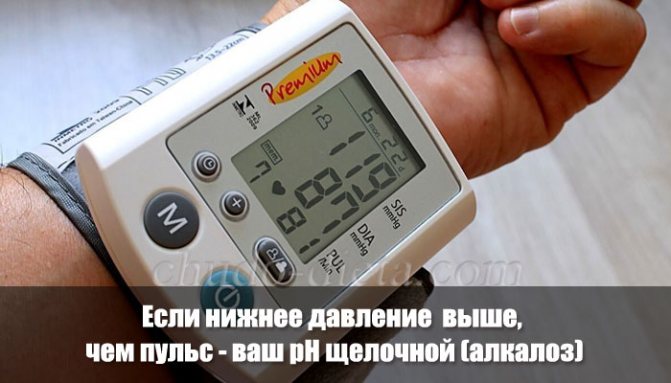
For example, your lower pressure is 65 and your pulse is 72 beats per minute. The body is slightly acidified.
Here you can watch video instructions:
Provide calcium for food!
In order to maintain normal blood acidity after eating acidifying foods, the body will be forced to spend some of the calcium. The same one he gets from food - instead of using up this calcium to restore bones and teeth. And if your food is very acidic (a sandwich with cheese or fish with rice), your body will also be forced to spend some of the calcium that is in the body (that is, pull it out of the bones).
Accordingly, a person who eats an acidifying diet constantly increases his calcium debt. And his bones, teeth and health are becoming increasingly fragile. Moreover, getting a very large amount of calcium from food does not eliminate bone loss:
- Eskimos consume twice as much calcium as those eating a typical Western diet (about 2,000 mg per day), but this does not prevent them from osteoporosis. Compared to Europeans, an adult Eskimo of the same weight has 10–15% less bone mass. This is due to the increased consumption of oxidizing foods: fish, seal, whale, walrus... Although Eskimos get a huge amount of calcium from these foods, it is still not enough to compensate for the acidifying effect of their food;
- The African Bantu people consume no more than 400 mg of calcium daily and eat mainly plant-based foods with low protein content (47 g per day), but there is practically no osteoporosis [4].
How to diet. Phases
Before changing your old habitual diet to a new one, it is advisable to prepare your body so that the transition is not too abrupt. You should try not to eat after 19.00, stop cooking heavy food. Make a list of necessary products in advance and make sure they are always present in the refrigerator. During the diet, you need to monitor your well-being. Pay attention to little things like chewing your food thoroughly and slowly. After your meal, it is recommended to take a cup of warm herbal tea. This will allow you to achieve results faster. A standard alkaline diet course lasts 3 weeks. Each week corresponds to a certain phase.
First phase
At this moment, the body adjusts to an alkaline environment. The blood is saturated with oxygen, carrying it to all organs. Slags and toxins are removed, the body is cleansed. During this period, you may feel slight malaise, weakness, drowsiness, and heaviness in the stomach. If the alarming symptoms do not go away, you should stop the diet. In the first week, weight decreases by 4 kg. At this time, you need to completely eliminate foods with a high acid index: white bread, alcohol, cheese.
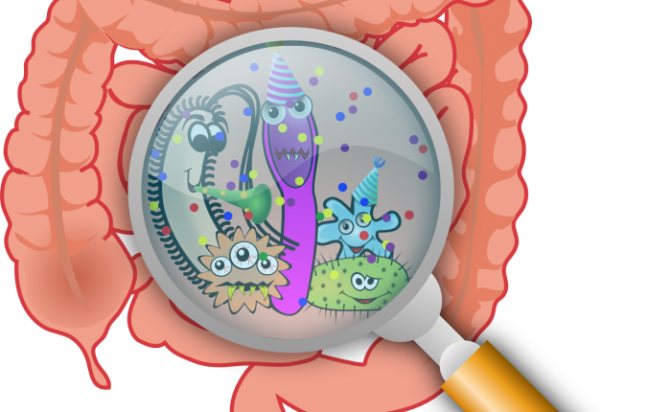
Second phase
In the second week of the diet, the acid-base balance levels out to a normal level. The weight comes off more slowly, from 1 to 2.5 kg. Feeling better, ailments disappear. The period of adaptation is left behind.
Third phase
The final week of the diet is designed to consolidate the results. At this moment, weight loss of up to 1 kg is still underway. The pH balance has been completely restored. This results in improved well-being. The body organs are filled with alkaline blood, endurance and work capacity increase. If necessary, you can continue to follow the diet, or better yet, make it a norm of life.
Calcium and milk: marketing fantasies
I will debunk the marketing myth that milk and dairy products are an excellent source of calcium in a special anti-dairy article. Calcium absorption studies show that the body can only absorb 18–36% of the calcium contained in milk. And even less from cheese, since the high concentration of milk fat leads to the fact that most of the calcium is bound by fat and excreted from the body unabsorbed. And the high acidifying coefficient of milk and dairy products (including “healthy” kefirs and curdled milk) leads to the fact that when they are consumed, more calcium is removed from the body than it enters. This explains the higher rate of osteoporosis and fractures in people who consume milk and milk at least 2-3 times a week.
ACIDIFYING
DAIRY Parmesan cheese 34.2 Processed cheese 28.7 Reduced fat cheddar 26.4 Hard cheeses (on average) 19.2 Fresh cheese 11.3 Cottage cheese 8.7 Whole milk yogurt 1.5 Ice cream 0.8 Whole milk 0.7
EGGS Eggs yolk 23.4 White eggs 1.1 Whole chicken eggs 8.2
MEAT Canned meat 10.2 Turkey 9.9 Veal 9.0 Lean beef 7.8 Sausages 6.7
NUTS Peanuts 8.3 Walnuts 6.8
GREATS AND GRAIN PRODUCTS Brown Rice 12.5 Oatmeal 10.7 Whole grain spaghetti 7.3 White flour spaghetti 6.5 Corn flakes 6.0 White rice 4.6 Rye bread 4.1 Whole wheat bread 1.8
LEGUMES Lentils green and brown 3.5
FATS AND OILS Butter 0.6
FISH Trout 10.8 Cod fillet 7.1
DRINKS Coca-Cola 0.4
Sample Alkaline Diet Menu
When carrying out an alkaline diet, you can create a menu for the week yourself, based on the table of allowed foods.
| Diet | Breakfast | Lunch | Dinner | Afternoon snack | Dinner |
| 1 day | 250 ml soy milk, green and yellow vegetable salad. | 2-3 fruits. | Durum wheat pasta with cheese sauce. | 250 ml of natural low-fat yoghurt. | 200 g boiled beef, vegetable salad, freshly squeezed juice from 2 citrus fruits. |
| Day 2 | 2 soft-boiled eggs, a glass of natural juice. | Fruit salad. | Cream of mushroom soup with vegetables. | Smoothie made from milk and berries. | Baked fish, vegetable salad, herbal tea. |
| Day 3 | Brown rice with a side dish of vegetables, rosehip drink. | Sandwich with lettuce and hard cheese. | Potatoes stewed with cabbage, freshly squeezed juice. | Sweet and sour apples. | 200 g boiled beef, leafy green salad and 1 glass of natural yogurt. |
| 4 day | 2 hard-boiled chicken eggs, grapefruit. | Whole grain toast, orange juice. | 200 g steamed chicken breast, 250 ml soy milk, 2 tomatoes. | 30 g nuts. | Homemade salad of cucumbers, cheese and tomatoes, green tea. |
| 5 day | Oatmeal with water and dried fruits. | 100 g wholemeal bread, fruit juice. | Beetroot soup cooked with kefir, 50 g of canned tuna, chicory tea. | Vegetable drink. | 2 baked potatoes, tomato and cucumber salad, herbal infusion. |
| Day 6 | Potato and grated carrot cutlets, herbal tea. | 250 ml milk with 2.5% fat content. If desired, you can add 1 tsp. honey | Potato and mushroom cream soup, bran bread. | Fruit smoothie. | Stuffed cabbage rolls with vegetables, rosehip infusion. |
| Day 7 | Low-fat cottage cheese with banana. | 50 g dried fruits. | Vegetable soup, rye bread toast. | Melissa decoction, 2 biscuits. | Buckwheat porridge with the addition of stewed beef, vegetable salad, 250 ml of kefir. |
ALKALINIZING
VEGETABLES Cucumber -0.8 Broccoli -1.2 Tomatoes -3.1 Eggplant -3.4 Celery -5.2 Spinach -14.0
FRUITS, NUTS AND FRUIT JUICES Sugar-free grape juice -1.0 Sugar-free orange juice -2.9 Apples or sugar-free apple juice -2.2 Apricots -4.8 Banana -5.5 Black currants -6.5 Raisins -21.0
LEGUMES Green and brown lentils 3.5 Green beans -3.1
SUGAR White sugar -0.1 Honey -0.3
FATS AND OILS Butter 0.6 Margarine -0.5 Olive oil 0.0
DRINKS White beer -0.9 Draft beer -0.2 White wine -1.2 Coffee -1.4 Red wine -2.4
So what is it, an alkalizing diet?
As you can see from the table above, eating according to the alkalizing option is simple - exactly as I advise listeners of the Max Pogorely Health Studio. To do this, you need to gradually eliminate all cereals, grains and products made from them from your diet, and eat at least 1.5 - 2 kg of vegetables, herbs and fruits. The amount of protein products (both animal and plant) must be brought to a reasonable minimum!
You don’t need to switch to such a diet right away, of course: your intestines simply cannot cope with shock doses of vegetation. At the same time, you should also know the secret of how to properly wean the body from the love of sweets and baked goods, and how to correctly create a complete diet of alkalizing foods.
I teach how to switch to proper nutrition without stress and risk to health in my Health Workshop classes. A new website will be launched soon (the old one was captured by ruthless pirates). In the meantime, welcome to the Facebook page “Max Pogorely” for information and inspiration!
Alkaline foods for cancer
Many medical experts claim that a properly selected alkaline diet helps prevent the development of cancer cells.
To prevent the occurrence of cancer cells, the following products from the list are recommended:
- Lemon, lime, grapefruit, watermelon, mango.
- Garlic, parsley, onion, beets, celery.
- Millet.
- Linseed oil.
Experts advise adhering to the following rules to prevent the occurrence of cancer cells:
- Introduce raw fruits and vegetables into your daily diet.
- Get out into the fresh air every day.
- Consume only freshly squeezed juices.
- Reduce consumption of meat products.
- Eliminate the use of synthetic products.
Due to poor nutrition, the incidence of cancer increases, so it is necessary to consume alkaline foods not only to improve the general condition of a person, but also as a preventive measure against such complex diseases as cancer.
Sources of invaluable information
- Walter W. Palmer: Relationship between plasma bicarbonate and urinary acidity following the administration of sodium bicarbonate
- Thomas Remer: Potential renal acid load on foods and it's influence on urine pH/
- Gerry K. Schwalfenberg: The Alkaline Diet: Is There Evidence That an Alkaline pH Diet Benefits Health?
- Hegsted, D. M., 1986. Calcium and Osteoporosis. J. Nutr., 116, 2316–2319.
The material was published on www.fireinspire.com.ua.
CAUTION: Always consult your doctor when making any changes to your diet or lifestyle, as there may be contraindications in each specific case. The recommendations provided in this article are not a substitute for professional medical care, consultation, diagnosis, advice, or treatment. The author and publication do not accept responsibility for the results of any use of the above information.
